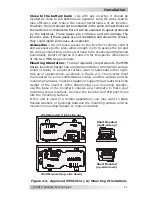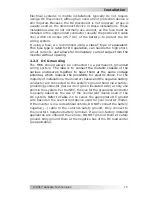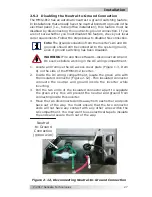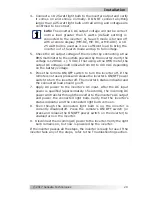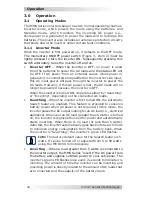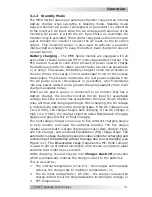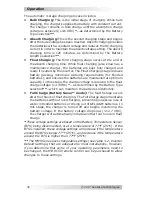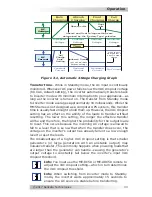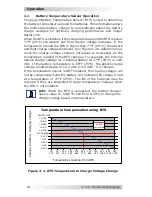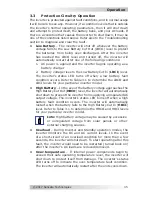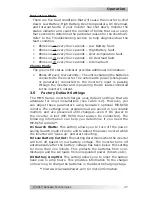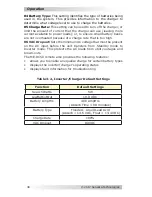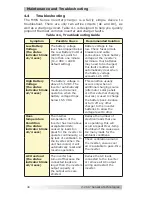
© 2017 Sensata Technologies
25
Installation
2.5 Grounding
Inverters
The MMS Series inverter/chargers should always be connected to a
permanent, grounded wiring system—which limits the risk of electrical
shock, reduces radio frequency noise from the inverter, and minimizes
excessive surge voltages induced by lightning.
2.5.1 Neutral to Safety Ground Bonding
The standards for safely wiring residential (home or of
fi
ce), RV/truck,
and marine installations in the United States require the neutral
and safety ground to be connected at the AC source; whether it is
the utility feed in your home, an inverter, or a generator. This is to
establish a speci
fi
cation that maximizes the possibility that a circuit
breaker will activate if a hot wire-to-ground fault occurs. These
standards also require that the AC neutral be connected to safety
ground (often called a “bond”) in one, and only one, place at any time.
The single bond is established in order to make the electrical panel’s
neutral line safe, by connecting it to ground. Without this bond, the
neutral can have up to 60 VAC with respect to ground. On the other
hand, if more than one bond is established, currents can circulate
between neutral and ground and cause “ground-loop” currents. These
ground-loops can trip GFCIs, cause an electric shock hazard, and may
be the reason for other annoying side effects.
In applications where you are using an inverter as one of your AC
sources along with another AC source (i.e., utility power or generator),
there is the potential of having multiple connections (bonds) between
neutral and ground. Therefore, you must ensure that the inverter does
not also connect the neutral-to-ground while the other AC source is
actively powering the inverter loads. This can be prevented if your
inverter is equipped with automatic neutral-to-ground switching.
5. Using approved AC wire connectors, connect the outgoing Hot
Out, Neutral Out, and AC Ground wires to the inverter’s AC wires
colored red (HOT OUT), white with black stripe (NEU OUT), and
green (AC GROUND) respectively.
6. After making the AC output connections, gently pull on the wires
to ensure they are securely held together and no bare wire is
exposed, and then secure the AC output cable by tightening the
strain relief.
7. Connect the outgoing AC wires to either:
a) an AC load sub-panel equipped with overcurrent protection
(e.g., circuit breakers), or
b) directly to the circuit (if following RVIA requirements that
permit using breakers from the main distribution panel or the
breakers on the inverter under certain conditions).
The AC output wiring in the inverter should be complete. Before
reattaching the AC access cover, review all AC wiring to ensure all
connections are correct and secure.

